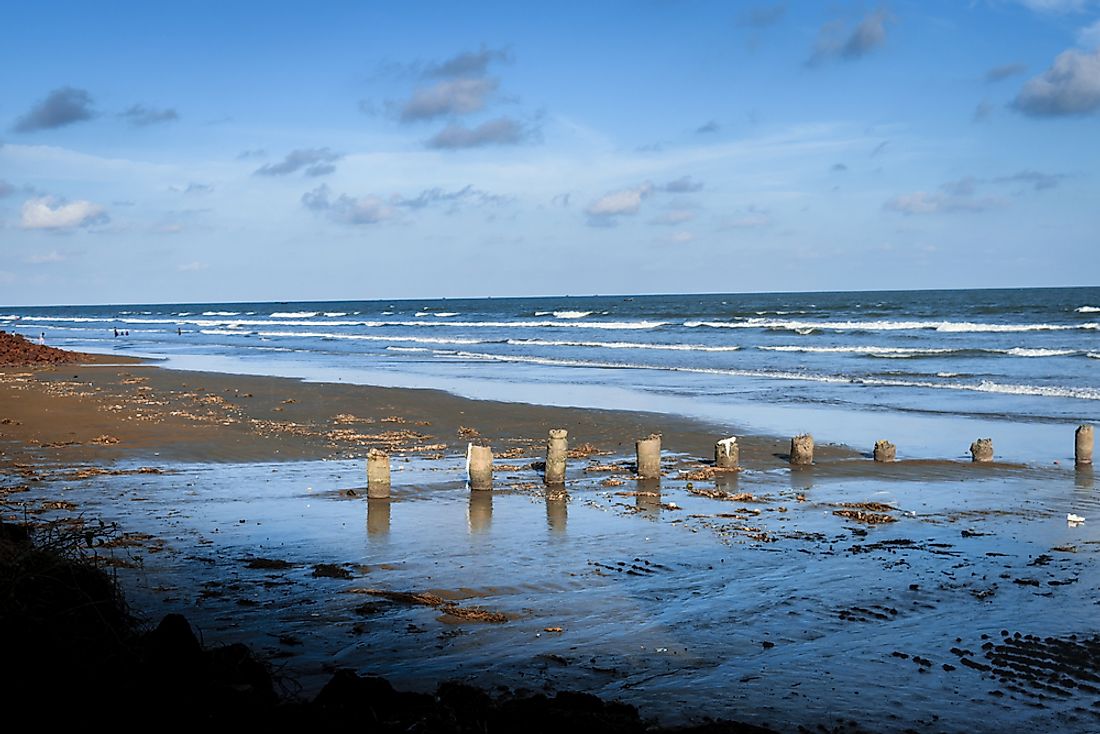The Largest Submarine Fan On Earth

What Is A Submarine Fan?
The marine world is not only rich with animals and plants but also with several structures that have been formed through geological processes. One of the geological structures is the Abyssal or submarine fans that are associated with large-scale deposition of sediments. They are the underwater version of the alluvial fans and they vary significantly in size with the width from several miles to thousands of miles. They are formed by turbidity currents which start when something like an earthquake triggers sediments to be pushed over the continental shelf and down the continental slope leading to a submarine landslide. The largest known submarine fan on earth is the Bengal Fan.
The Bengal Fan
The Bengal Fan has a length of 1864 miles, a width of about 622 miles and a thickness of about 10 miles. It was created by the collision between India and Asia and the uplifting of the Himalayas and Tibetan Plateau. Bengal Fan is fed by the confluence of the Ganges and Brahmaputra River with a few sediments from other large rivers in India and Bangladesh. The sediments have been transported by turbidity currents through a series of submarine canyons with some canyons as long as 1,500 miles. The oldest sediments obtained from the Bengal fan originated from Early Miocene age with their minerals and chemicals suggesting that Himalayas existed as a major range as early as 20 million years ago.
Description Of The Bengal Fan
The fan is made up of a submarine canyon source and an active valley system. The head of the canyon is located at the mid-shelf with the supply of the sediments decreasing significantly from the large supply which characterized the past periods. The Holocene Turbidities are not as frequent as before while the active channel is not completely filled with sediments from the turbidities. Abandoned fan valleys are being filled in the upper fans with several open and abandoned fan valleys characterizing the lower fan. The current active channel was formed 12,000 years ago through a period of activities of the significant open channels. Bengal fun is currently being explored for possible sources of fossil deposits for the developing nations surrounding it
The Seismic Framework
Bengal fan spreads over the whole floor of the Bay of Bengal stretching from the continental margins of India and Bangladesh to the Sunda Trench. The lope of the fan called Nicobar Fan lies on the Ninetyeast Ridge with its primary source of Turbidity current from the head of Bay of Bengal which was cut off during the Pleistocene. The initiation and the deposition of the Bengal fan were due to the collision of India and Asia and the formation of the proto-Bay of Bengal. The continued convergence of Indian and Southeast Asian plates reduced the size of the Bay focusing the turbidities into the present day Bengal Basin. The collision took place at different times along the northern edge of India. It is not possible to determine the exact date of the collision but several studies suggest that the collision may have taken place during the Early Miocene age over 20 million years ago.











